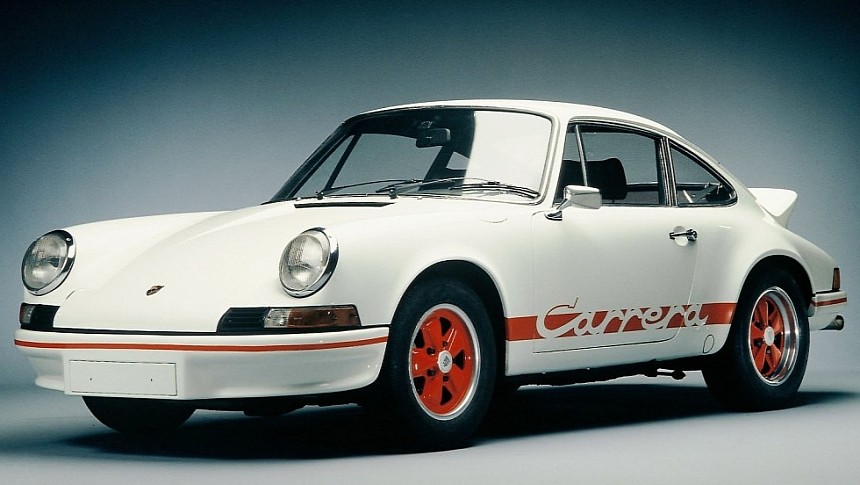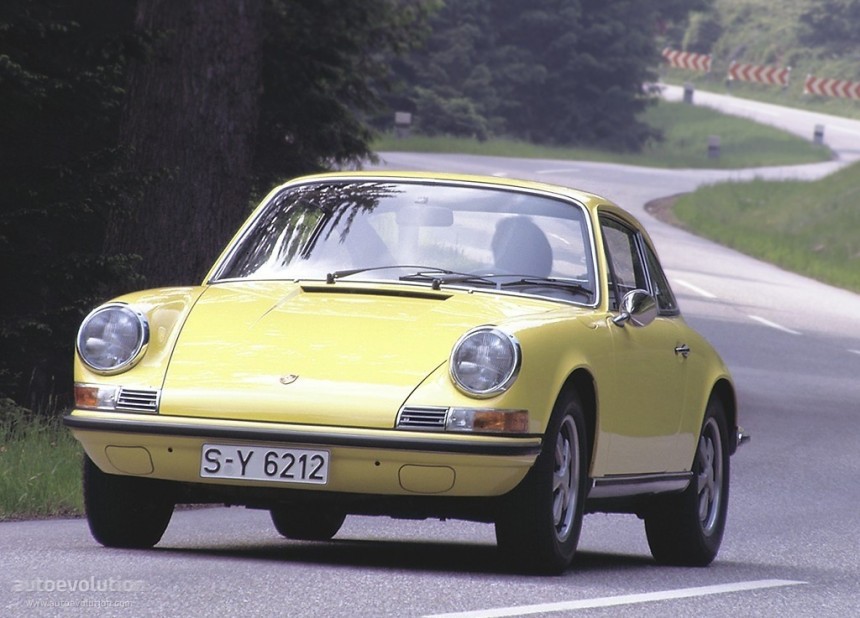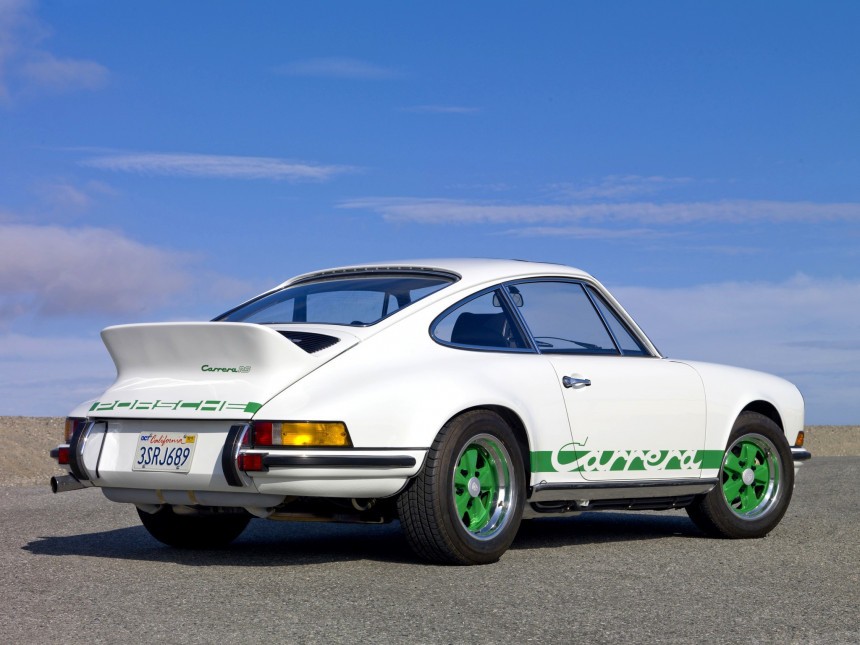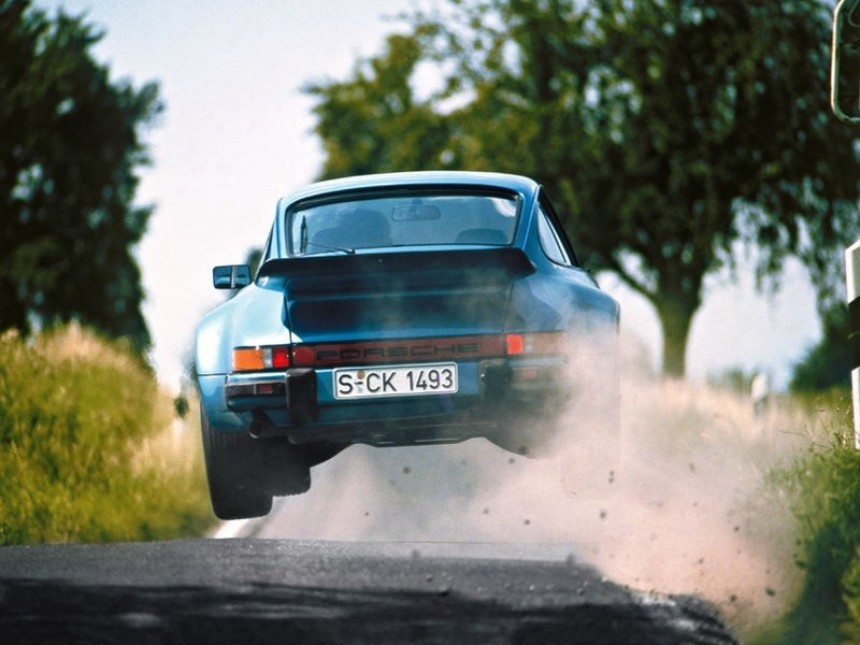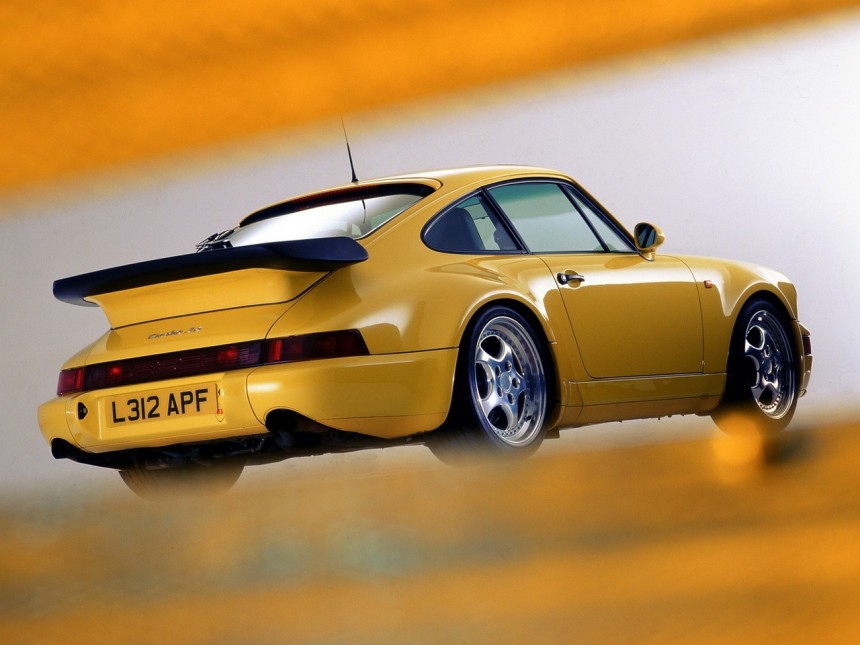If I asked you to envision the quintessential sports car, which nameplate would you think about? Some will point to a classic British roadster, American patriots might picture a Chevy Corvette, and there’s definitely some JDM phenom floating around in many readers’ imaginations.
However, there are countless car enthusiasts – yours truly included – who would immediately start thinking about the elegant silhouette, unmistakable oval headlights, and outstanding legacy of the Porsche 911. In this two-part article, we’ll be looking at the history of Porsche’s legendary lineup from its inception to the present day, so you may want to go ahead and brace yourself for some very confusing nomenclature!
Of course, a lot of Porsche purists haven’t hesitated to throw criticism at the 911 as it evolved; not because the iterations they would frown upon were bad cars, but that’s just what purists do, naturally. Despite some people being downright impossible to please, Porsche’s long-running flagship will always stand out as one of the top dogs in its class.
In September 2023, six decades will have passed since the beloved P-car made its first public appearance, giving us the perfect reason to refresh our memories on how the 911 tale has unfolded. That being said, let’s dive right in, shall we? It all started in the ambitious mind of Ferdinand Porsche.
No, not the company’s founder nor his son who bore the same name and was nicknamed Ferry, but the guy we know as Ferdinand Alexander Porsche, or simply Butzi. Porsche’s very first car – the 356 – was starting to grow outdated as the sixties rolled around, and it became clear that a replacement would be needed sooner rather than later.
Having penned the initial concept, Butzi was deeply involved in the design process, but much input during development came from his father Ferry and one Erwin Komenda as well. Compared to the 356, the new model was to gain two more seats, a couple of extra cylinders, and a bump in engine capacity from 1.6 to a beefier two liters.
Upon its debut at the Frankfurt Motor Show of 1963, the car we now know as the 911 was actually badged as the 901. Production began in September the following year, and a total of 82 copies were sold as 901s until November. Then, Peugeot protested on grounds that it was them who owned exclusive rights for car names made of three digits with a zero in the middle, though this was only valid for France.
Nonetheless, Porsche decided it would be best to rename the vehicle in all markets, plainly replacing the problematic zero with a one. In its earliest form, the 911 – or Neunelfer in Deutsch – could extract up to 130 air-cooled ponies from its rear-mounted, six-cylinder boxer. Offered solely as a 2+2 fastback coupe at first, this Teutonic legend in the making had a very respectable top speed of 210 kph, which is about 130 mph for those of you who don’t speak metric.
Obviously, rear-wheel drive has been a part of the 911 DNA ever since day one, and it would take nearly three decades for another drivetrain configuration to be adopted. Porsche discontinued the 356 in 1965, yet there were still plenty of buyers interested in a sporty four-cylinder coupe. As such, the German marque wasted no time filling this gap with the 912 – essentially a 911 on the outside, but with a tamer 1.6-liter flat-four from the 356 SC under the hood.
The 912 stayed in production until 1969, with just north of 32,000 units sold during its lifespan. Now then, back to our main plot: 1966 saw the introduction of the 160-hp 911 S, the first model to feature Fuchs alloy wheels. The open-top Targa variant – named after the Targa Florio race won by Porsche several times – was also born that year, with its definitive trait being a stainless-steel roll hoop fitted right behind the seats.
In essence, this new body style was a product of the company’s fears regarding ever-tightening U.S. safety regulations and a potential ban on convertibles. That never happened, of course, but the manufacturer continues to build Targa variants of the 911 to this day. Okay, let us give you a quick disclaimer before we go any further.
It would take ages to mention every single great model this lineup had to offer over the years. I mean, we needed two articles to even scratch the surface on this topic, so we’ll stick to analyzing each generation as a whole and highlighting a few of the stand-out variants along the way.
The P-car saw its engine capacity increase steadily as time went by, from two liters to a beefier 2.2 in 1969 and then 2.4 in 1971. Ultimately, the earliest generation culminated in the 210-hp Carrera RS 2.7 of 1972, which was the world’s first production vehicle to come with a rear spoiler straight from the factory. One year later, Porsche decided it was time for their sporty little beast to undergo a comprehensive overhaul.
Enter the G series, a 911 incarnation that would sell just under 200,000 copies and stay in production until 1989 – longer than any of its forerunners or successors. Passenger protection was upgraded with sturdier, more prominent front and rear bumpers, as well as the addition of three-point safety belts and integrated headrests as standard features.
What is perhaps the most notable engineering leap of this generation had occurred in 1974, with the arrival of forced induction on the 911 Turbo (also known as the 930). A three-liter flat-six making 260 force-fed ponies was the first powerplant to occupy its engine bay, but this would make way for a larger 3.3-liter mill good for up to 300 hp in 1977.
Although the 930 quickly gained a cult classic aura, it would take one very skilled driver to keep it under control. Handling characteristics prone to oversteer and the inherent unpredictability that comes with turbo lag proved to be a pretty dangerous mixture, one which led to the 911 Turbo being ominously nicknamed the “widowmaker.”
As for the naturally aspirated models like the Carrera, engine capacity was first dialed up to 2.7, then three, and eventually 3.2 liters. Starting in 1982, open-top aficionados could at last purchase the 911 as a traditional cabrio, whose debut at the insistence of newly-appointed CEO Peter Schutz marked another milestone for the G series.
For a little side note: the company was, in fact, thinking about discontinuing their rear-engine flagship as the seventies drew to a close, and we can thank Schutz for saving the day once he took command in '81. Now, there’s one last thing we’d like to point out before we talk about the next generation, that being the switch to a thoroughly refined Getrag G50 five-speed and a hydraulic clutch for 1987.
Then came 1989; the Berlin wall crumbled along with communism in Eastern Europe, Brazilians had their first free presidential election after three decades of authoritarian rule, and Porsche’s freshest 911 iteration, the 964, was in its first year of production. The car featured a more streamlined exterior and 85 percent new parts compared to its predecessor, but what really made it stand out from prior models was the addition of all-wheel drive on the Carrera 4.
If one wanted to take the conventional route, they could do so with the rear-wheel drive Carrera 2, which became available six months after its AWD sibling. Both were powered by a 3.6-liter, 250-hp boxer codenamed M64 and had ditched the torsion-bar suspension in favor of alloy control arms and coil springs.
Besides these upgrades and a completely redesigned chassis, other novelties characterizing the 964 included power steering, airbags, and ABS. The Carrera 2 variant could also be bought with an optional Tiptronic four-speed automatic allowing manual override. When the updated 911 Turbo arrived in 1990, it still used the 3.3-liter engine from the 930 but with several improvements and a factory-rated output of 316 hp.
Porsche didn’t have the time nor resources to develop a turbocharged adaptation of their 3.6-liter at first, but this would change for the model-year 1993. The Turbo had finally gotten the larger powerhouse at that point, and it could muster an astounding 360 ponies – just sixteen shy of the ultra-limited 911 Turbo S released a year earlier.
Indeed, the 964-gen wasn’t without its problems, as the 3.6-liter mills were originally built without head gaskets and are said to have a chronic tendency toward leaking. This issue was addressed by 1991, yet Porsche never actually recalled the faulty units sold beforehand.
The beloved 993 hit the assembly line as a 1994 model, and this is the generation that many enthusiasts would regard as their favorite. Beneath its restyled bodywork sat an all-new aluminum chassis, multi-link rear suspension for extra handling stability, and a beefed-up version of the tried-and-true 3.6-liter flat-six with variable-length intake runners. This power unit boasted 268 horses on tap, and it could once again be had with either a rear- or all-wheel drive setup.
Porsche spawned a myriad of exceptional cars throughout the 993’s lifespan. With a mere 200 copies produced, the GT2 homologation special of 1995 was one such model and will nowadays fetch well over half a million bones at auction. Then there was the Turbo specimen, freshly armed with all-wheel drive and not one, but two turbochargers for a total output of 408 hp.
This thing was nothing short of an absolute monster, but the top-spec Turbo S from ‘97 reached even greater heights with bigger compressors, 450 ponies, and a zero-to-sixty time of just 3.7 seconds. On the other hand, Targas saw their removable tops discarded in favor of sliding electric glass roofs for 1996 – another development aimed at bringing the 911 into the modern age.
Ah, but what the 993 is typically remembered for has nothing to do with the twin turbos, multi-link suspension, or crazy limited editions; oh no. This generation marked the end of an era when production ceased in ‘98, as it was the last to employ one of the traits which defined the 911 since day one – air cooling. Much uproar would be stirred among diehard fans over the change to liquid-cooled engines on the later 996, but that, ladies and gents, is a story for another time.
Of course, a lot of Porsche purists haven’t hesitated to throw criticism at the 911 as it evolved; not because the iterations they would frown upon were bad cars, but that’s just what purists do, naturally. Despite some people being downright impossible to please, Porsche’s long-running flagship will always stand out as one of the top dogs in its class.
In September 2023, six decades will have passed since the beloved P-car made its first public appearance, giving us the perfect reason to refresh our memories on how the 911 tale has unfolded. That being said, let’s dive right in, shall we? It all started in the ambitious mind of Ferdinand Porsche.
No, not the company’s founder nor his son who bore the same name and was nicknamed Ferry, but the guy we know as Ferdinand Alexander Porsche, or simply Butzi. Porsche’s very first car – the 356 – was starting to grow outdated as the sixties rolled around, and it became clear that a replacement would be needed sooner rather than later.
Having penned the initial concept, Butzi was deeply involved in the design process, but much input during development came from his father Ferry and one Erwin Komenda as well. Compared to the 356, the new model was to gain two more seats, a couple of extra cylinders, and a bump in engine capacity from 1.6 to a beefier two liters.
Nonetheless, Porsche decided it would be best to rename the vehicle in all markets, plainly replacing the problematic zero with a one. In its earliest form, the 911 – or Neunelfer in Deutsch – could extract up to 130 air-cooled ponies from its rear-mounted, six-cylinder boxer. Offered solely as a 2+2 fastback coupe at first, this Teutonic legend in the making had a very respectable top speed of 210 kph, which is about 130 mph for those of you who don’t speak metric.
Obviously, rear-wheel drive has been a part of the 911 DNA ever since day one, and it would take nearly three decades for another drivetrain configuration to be adopted. Porsche discontinued the 356 in 1965, yet there were still plenty of buyers interested in a sporty four-cylinder coupe. As such, the German marque wasted no time filling this gap with the 912 – essentially a 911 on the outside, but with a tamer 1.6-liter flat-four from the 356 SC under the hood.
The 912 stayed in production until 1969, with just north of 32,000 units sold during its lifespan. Now then, back to our main plot: 1966 saw the introduction of the 160-hp 911 S, the first model to feature Fuchs alloy wheels. The open-top Targa variant – named after the Targa Florio race won by Porsche several times – was also born that year, with its definitive trait being a stainless-steel roll hoop fitted right behind the seats.
In essence, this new body style was a product of the company’s fears regarding ever-tightening U.S. safety regulations and a potential ban on convertibles. That never happened, of course, but the manufacturer continues to build Targa variants of the 911 to this day. Okay, let us give you a quick disclaimer before we go any further.
The P-car saw its engine capacity increase steadily as time went by, from two liters to a beefier 2.2 in 1969 and then 2.4 in 1971. Ultimately, the earliest generation culminated in the 210-hp Carrera RS 2.7 of 1972, which was the world’s first production vehicle to come with a rear spoiler straight from the factory. One year later, Porsche decided it was time for their sporty little beast to undergo a comprehensive overhaul.
Enter the G series, a 911 incarnation that would sell just under 200,000 copies and stay in production until 1989 – longer than any of its forerunners or successors. Passenger protection was upgraded with sturdier, more prominent front and rear bumpers, as well as the addition of three-point safety belts and integrated headrests as standard features.
What is perhaps the most notable engineering leap of this generation had occurred in 1974, with the arrival of forced induction on the 911 Turbo (also known as the 930). A three-liter flat-six making 260 force-fed ponies was the first powerplant to occupy its engine bay, but this would make way for a larger 3.3-liter mill good for up to 300 hp in 1977.
Although the 930 quickly gained a cult classic aura, it would take one very skilled driver to keep it under control. Handling characteristics prone to oversteer and the inherent unpredictability that comes with turbo lag proved to be a pretty dangerous mixture, one which led to the 911 Turbo being ominously nicknamed the “widowmaker.”
For a little side note: the company was, in fact, thinking about discontinuing their rear-engine flagship as the seventies drew to a close, and we can thank Schutz for saving the day once he took command in '81. Now, there’s one last thing we’d like to point out before we talk about the next generation, that being the switch to a thoroughly refined Getrag G50 five-speed and a hydraulic clutch for 1987.
Then came 1989; the Berlin wall crumbled along with communism in Eastern Europe, Brazilians had their first free presidential election after three decades of authoritarian rule, and Porsche’s freshest 911 iteration, the 964, was in its first year of production. The car featured a more streamlined exterior and 85 percent new parts compared to its predecessor, but what really made it stand out from prior models was the addition of all-wheel drive on the Carrera 4.
If one wanted to take the conventional route, they could do so with the rear-wheel drive Carrera 2, which became available six months after its AWD sibling. Both were powered by a 3.6-liter, 250-hp boxer codenamed M64 and had ditched the torsion-bar suspension in favor of alloy control arms and coil springs.
Besides these upgrades and a completely redesigned chassis, other novelties characterizing the 964 included power steering, airbags, and ABS. The Carrera 2 variant could also be bought with an optional Tiptronic four-speed automatic allowing manual override. When the updated 911 Turbo arrived in 1990, it still used the 3.3-liter engine from the 930 but with several improvements and a factory-rated output of 316 hp.
Indeed, the 964-gen wasn’t without its problems, as the 3.6-liter mills were originally built without head gaskets and are said to have a chronic tendency toward leaking. This issue was addressed by 1991, yet Porsche never actually recalled the faulty units sold beforehand.
The beloved 993 hit the assembly line as a 1994 model, and this is the generation that many enthusiasts would regard as their favorite. Beneath its restyled bodywork sat an all-new aluminum chassis, multi-link rear suspension for extra handling stability, and a beefed-up version of the tried-and-true 3.6-liter flat-six with variable-length intake runners. This power unit boasted 268 horses on tap, and it could once again be had with either a rear- or all-wheel drive setup.
Porsche spawned a myriad of exceptional cars throughout the 993’s lifespan. With a mere 200 copies produced, the GT2 homologation special of 1995 was one such model and will nowadays fetch well over half a million bones at auction. Then there was the Turbo specimen, freshly armed with all-wheel drive and not one, but two turbochargers for a total output of 408 hp.
This thing was nothing short of an absolute monster, but the top-spec Turbo S from ‘97 reached even greater heights with bigger compressors, 450 ponies, and a zero-to-sixty time of just 3.7 seconds. On the other hand, Targas saw their removable tops discarded in favor of sliding electric glass roofs for 1996 – another development aimed at bringing the 911 into the modern age.
Ah, but what the 993 is typically remembered for has nothing to do with the twin turbos, multi-link suspension, or crazy limited editions; oh no. This generation marked the end of an era when production ceased in ‘98, as it was the last to employ one of the traits which defined the 911 since day one – air cooling. Much uproar would be stirred among diehard fans over the change to liquid-cooled engines on the later 996, but that, ladies and gents, is a story for another time.
